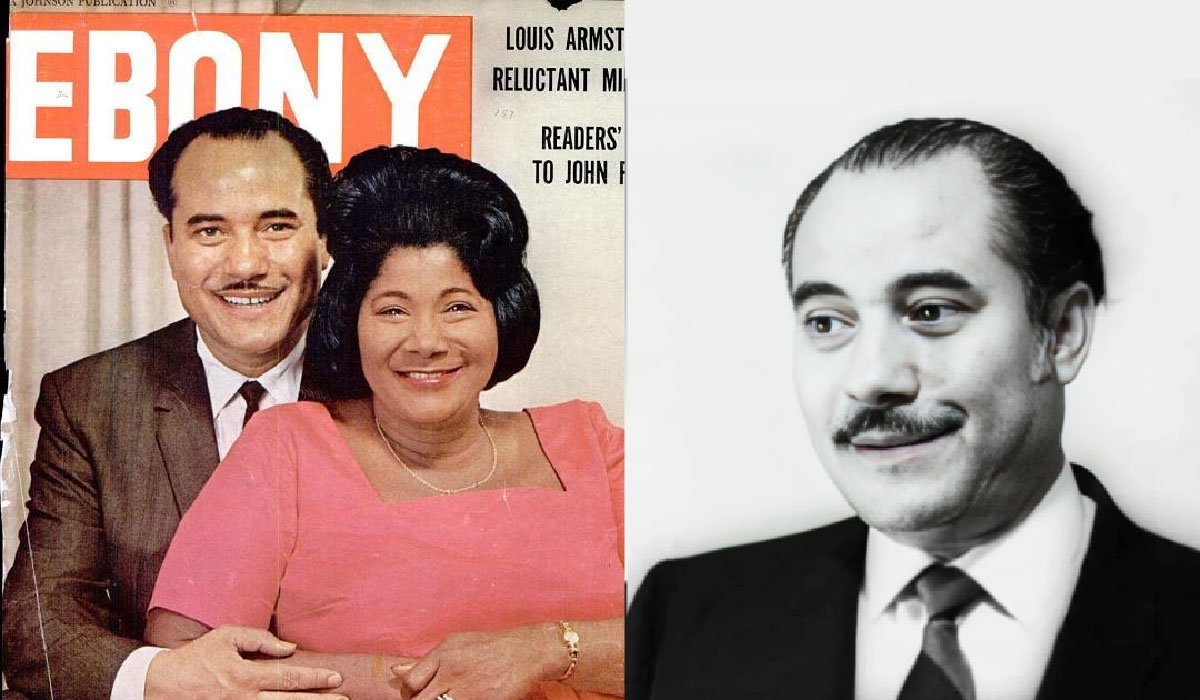On a crisp autumn evening in 1961, the stage lights dimmed at the renowned New York City Opera House. The audience, a mix of seasoned opera enthusiasts and curious newcomers, settled into their seats, their chatter hushed by the anticipation that filled the grand hall. As the conductor raised his baton, a young African American tenor named Sigmond Galloway stepped forward. For a moment, there was a collective intake of breath—a realization that this was no ordinary performance. Galloway’s deep, resonant voice filled the room, his notes soaring effortlessly through the air, capturing the audience with a blend of power and grace that few had ever heard, and that night marked the rise of a star who would break racial barriers and challenge societal norms in opera, forever changing its landscape.
Sigmond Galloway: Early Life and Passion for Music
Sigmond Galloway was born in Birmingham, Alabama, in 1922, during a period marked by racial segregation and limited opportunities for African Americans. Growing up in a modest family, Galloway’s early life was shaped by the realities of the South, where racial discrimination was pervasive and opportunities were scarce. Galloway’s passion for music was evident from a young age despite these challenges. He began singing in his local church choir, where his remarkable vocal range and emotional depth were first recognized.
Discovering a Voice of Gold
Galloway’s unique talent did not go unnoticed. At 16, he was awarded a scholarship to study at the prestigious Tuskegee Institute, where he received formal training under the tutelage of renowned music educators. His time at Tuskegee was transformative; it was here that Galloway honed his craft and began to dream of a career on the opera stage—a dream that, given the racial climate of the time, seemed almost impossible.
Breaking into the Opera Scene
In the 1940s, African American performers were largely excluded from the opera world, dominated by white European traditions. Despite this, Galloway’s resolve never wavered. He began performing in smaller venues and churches, gradually building a reputation as a tenor with extraordinary vocal abilities. His big break came when he was invited to perform with the New York City Opera in 1956, marking the beginning of a remarkable career.
Challenges and Triumphs in a Segregated Society
Navigating Racial Barriers
The opera world was not immune to the racial prejudices that permeated American society. Galloway faced considerable resistance as he sought to make a name for himself in a predominantly white industry. There were instances where he was denied opportunities simply because of his race, and he often faced hostility from critics and audiences who were unaccustomed to seeing an African American on the opera stage.
However, Galloway’s undeniable talent could not be ignored. He persevered, and with each performance, he began to win over skeptics. His portrayal of complex characters and rich, expressive voice gradually broke down racial barriers, allowing him to perform in some of the most prestigious opera houses across the United States and Europe.
Notable Performances and Accomplishments
One of Galloway’s most memorable performances was his portrayal of Canio in “Pagliacci,” a vocally demanding and emotionally intense role. His ability to convey the profound anguish of the character through his voice and stage presence earned him critical acclaim. Throughout his career, Galloway performed in numerous operas, including “Aida,” “Carmen,” and “La Traviata.” His versatility as a tenor allowed him to tackle a wide range of roles, from tragic heroes to complex villains, demonstrating a breadth of skill that set him apart from his contemporaries.
Legacy and Impact on the Opera World
A Trailblazer for Future Generations
Sigmond Galloway’s success paved the way for future generations of African American opera singers. His determination and resilience in the face of adversity opened doors that had long been closed to people of color. By challenging the status quo and demanding to be judged on his talent rather than the color of his skin, Galloway helped usher in a new era of diversity in opera.
Inspiring Change Through Talent and Tenacity
Galloway’s legacy extends beyond his performances. He was a vocal advocate for greater diversity and inclusion within the opera community, using his platform to speak out against racial discrimination. He worked tirelessly to mentor young African American singers, helping them to navigate the complexities of a career in opera. His efforts have had a lasting impact, with many of his mentees having successful careers.
Statistics and Impact on Opera Diversity
According to a 2020 report by Opera America, the representation of African Americans in principal opera roles has increased significantly since the 1960s, with African Americans now making up approximately 10% of all principal singers in U.S. opera houses. This progress can be directly linked to the trailblazing efforts of early pioneers like Sigmond Galloway, who broke through racial barriers and set new standards for diversity and inclusion in opera.
In addition, a 2019 League of American Orchestras survey found that 14% of opera audiences were people of color. This figure has been steadily rising over the past two decades. This shift reflects a broader cultural change within the opera world, where there is now a greater emphasis on diversity both on and off the stage.
Personal Life and Later Years
A Life Beyond the Stage
Offstage, Sigmond Galloway was known for his warm personality and dedication to his craft. He married in the 1950s and was a devoted husband and father, balancing his demanding career with his family life. Galloway was also an avid supporter of civil rights and was involved in numerous initiatives to promote racial equality within the arts and broader society.
Retirement and Ongoing Influence
After retiring from the stage in the 1980s, Galloway became a prominent figure in the opera world. He served as a mentor to young singers and was a frequent guest speaker at conservatories and universities, sharing his experiences and insights with the next generation of performers. His contributions to the arts were recognized with numerous awards, including a lifetime achievement award from the National Opera Association.
Conclusion: A Legacy of Courage and Excellence
Sigmond Galloway’s journey from a small-town choirboy to a celebrated opera tenor is a testament to his extraordinary talent, resilience, and unwavering commitment to his craft. Despite his numerous challenges, Galloway’s determination to succeed in a world that was often hostile to him paved the way for future generations of African American artists. His story is not just one of personal triumph but of a broader cultural shift towards greater diversity and inclusion in the arts. Sigmond Galloway remains an enduring symbol of what can be achieved through talent, hard work, and the courage to break down barriers.\
You Might Also Like
Frequently Asked Questions (FAQ)
Sigmond Galloway was a pioneering African American tenor who broke racial barriers in the opera world during the mid-20th century. Known for his powerful voice and passionate performances, he became one of the few African American opera singers to achieve significant success on both national and international stages.
Galloway is best known for his performances in operas such as “Pagliacci,” “Aida,” “Carmen,” and “La Traviata.” He was among the first African American tenors to perform with major opera companies, including the New York City Opera. His success paved the way for greater diversity and inclusion in opera.
Sigmond Galloway’s career helped break down racial barriers in opera, increasing opportunities for African American singers. His advocacy for diversity and inclusion in the arts has had a lasting impact, influencing generations of performers and contributing to a more diverse and inclusive opera community.
Galloway faced significant racial prejudice throughout his career, including being denied opportunities because of his race and facing hostility from some audiences and critics. Despite these challenges, he persevered and became a celebrated opera figure known for his exceptional talent and resilience.
Today, Sigmond Galloway is remembered as a trailblazer who broke racial barriers in opera and advocated for greater diversity and inclusion in the arts. His contributions continue to inspire and influence African American opera singers and performers from all backgrounds.





